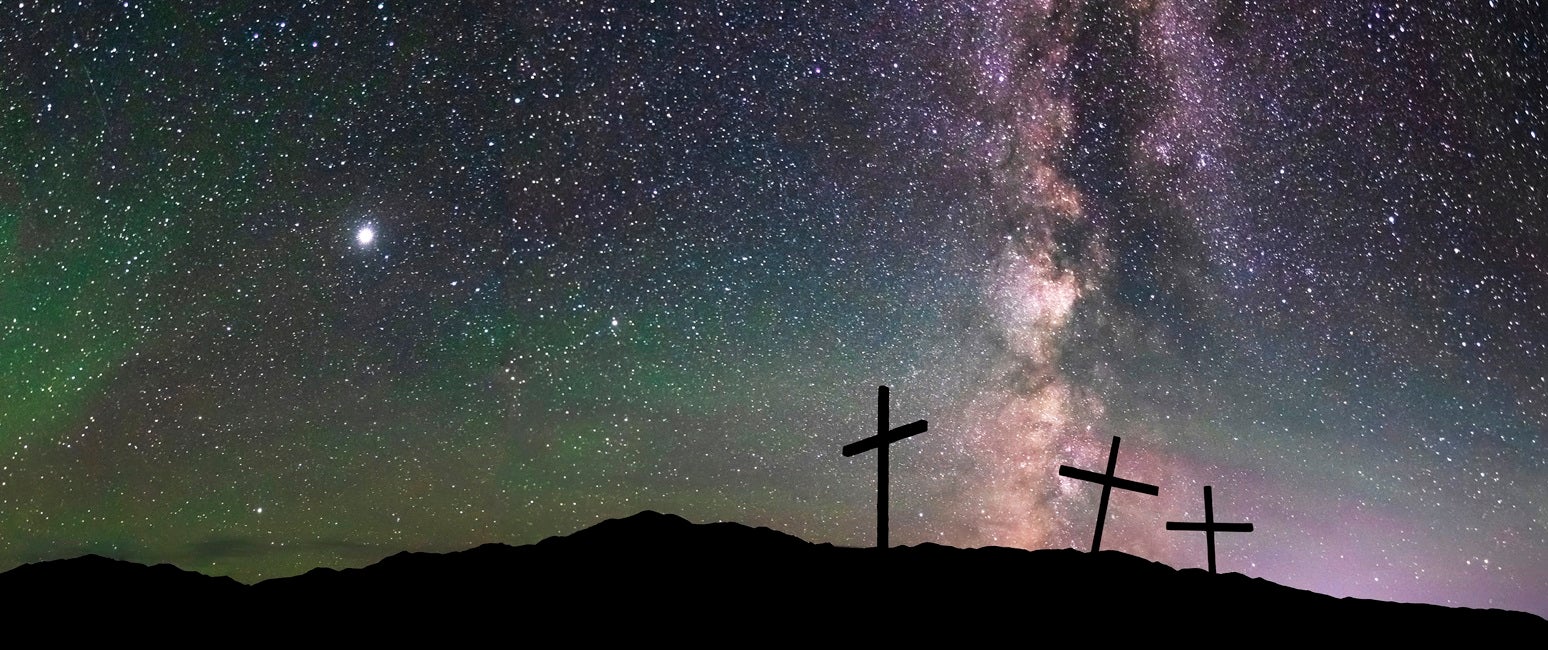
www.dailysignal.com
Hope Restored
It has been said that a person can live about 40 days without food, about three days without water, about eight minutes without air, but only for a few seconds without hope. For Good Friday, I am reading Ezekiel 37 in the Stand on the Word Bible Reading Plan. How providential! Because Ezekiel 37 is about hope restored.
In Ezekiel 37, God’s people had raised the white flag of surrender, and admitted in verse 11: “Our hope is lost…” They had cause for discouragement. Their nation had been invaded and taken over. They had been ripped out of their homeland. Now they were exiles in a foreign land, objects of shame, scorn and humiliation.
Slip into their sandals and consider: Gone was the city of David. Gone were the city walls and the king’s palace. Gone was the Temple, the place of God’s presence.
All of it was gone! For these people, it was as if someone had gone back to the book of Genesis and torn their history right out of the Bible. No wonder they sighed: “Our hope is lost.”
In response to His people who had given up hope, God had a word for Ezekiel to deliver. Once again, God gave His prophet an unforgettable vision. In a vast valley, as far as the eye could see in every direction, God showed Ezekiel a landscape littered with sun-bleached, dried-out bones scattered everywhere. The emblem, the symbol, the certificate of death. Ezekiel saw a fallen army of skeletons. Maybe a skull in a helmet over here, a bony hand clutching a rusty sword over there. And these bones appeared to be dried out, desiccated, picked clean by scavengers, bleached white in the scorching Judean sun.
As the prophet stood there and surveyed what appeared to be a hopeless and impossible situation, God asked him a question: “Can these bones live?” Ezekiel’s reply was essentially: “God, only you could know the answer to that one” (see v. 4). Ezekiel did not know but at least he was confident that God did know. Ezekiel had no hope in the dry bones, but he did have hope in the Lord His God.
Then God told Ezekiel to preach to the bones (v. 4). Ever the obedient servant, Ezekiel did so, and the result is nothing short of miraculous. For while he preached, he heard the noise of those bones rattling and scraping together (v. 7b). And before his very eyes, skeletons were fitted together, bone to bone, then sinew and tendons, and finally, these reconstituted skeletons were clothed with flesh (v. 8). At long last, Ezekiel had the rare commodity of a congregation that responded rightly to his preaching!
But there was one problem, they were still dead. They looked a lot more alive than they did when they were just dry bones scattered around in the desert sand, but there was no life in them (v. 8b). Consequently, God told Ezekiel to prophesy to the wind, in Hebrew the ruach, literally the breath, wind or Spirit (v. 9). Ezekiel once again did as he was commanded, and God breathed into them the “breath of life.” This is much like He did in Genesis 2 with Adam, but with one difference: this was a “re-vival,” a “resurrection.” They were alive once, then they died, now they were alive again. So, a vast army now stood in the place of scattered skeletons.
Then God gives Ezekiel the interpretation (v. 11-14). In 37:11, God quotes the people. They believed that there was no hope, bones were dried up, cut off, as good as dead. Indeed, they were. But God told them (v. 12-14) that He Himself would raise them up, as it were, from the dead. Furthermore, He would bring them back to the land and put His spirit within them. And that would renew their hope. From the benefit of our historical vantagepoint, we know that prophecy has been partially but amazingly fulfilled with the return of the Jewish people to the land of Israel.
But this passage also has application for us when we have lost hope.
After the crucifixion of Jesus, the disciples were discouraged in what must have seemed like an impossible situation. When Jesus died on that cross and was buried, their hope died and was buried as well. Indeed, the two sad disciples on the road to Emmaus verbalized it: “We had hoped that he was the one to redeem Israel” (Luke 24:21).
Yet later, huddled in that upper room, behind locked doors for fear of the Jewish authorities, hope appeared in human form! In John 20:21, Jesus, our living hope, spoke a word of comfort and commission to His discouraged disciples: “Peace be with you. As the Father has sent me, even so I am sending you.”
But then the risen Lord did something fascinating for His group of “spiritually scattered skeletons” in John 21:22: “He breathed on them and said to them, Receive the Holy Spirit.’” Fast forward to the Day of Pentecost, when the wind blew, the fire fell, and the Spirit filled them, and we witness how these fearful followers became lions for God! In the presence of the risen Jesus, and now with His presence in them, they experienced their hope restored. Instead of spiritually scattered skeletons, God now had a great and mighty army that proceeded to turn the world upside down for Christ as they marched through the pages of the book of Acts and beyond!
Consequently, Ezekiel 37 and Resurrection Sunday is a reminder that nothing, I repeat, nothing is impossible with God. God is the master of bringing possibility out of impossibility, of literally bringing life out of death! When you find yourself losing hope, go ahead and raise the white flag of surrender, offer the dry, scattered bones of your impossible looking situation to the God who speaks new life, who breathes fresh hope, and watch Him do the impossible. When you find yourself losing hope, He not only restores our hope, He is our living hope!
Originally published by The Washington Stand.
We publish a variety of perspectives. Nothing written here is to be construed as representing the views of The Daily Signal.
The post Hope Restored appeared first on The Daily Signal.














